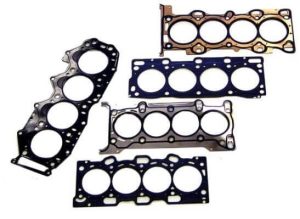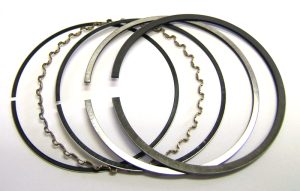Product
 Piston
Piston
A piston is a component of reciprocating engines, reciprocating pumps, gas compressors, hydraulic cylinders and pneumatic cylinders, among other similar mechanisms. It is the moving component that is contained by a cylinder and is made gas-tight by piston rings. In an engine, its purpose is to transfer force from expanding gas in the cylinder to the crankshaft via a piston rod and/or connecting rod. In a pump, the function is reversed and force is transferred from the crankshaft to the piston for the purpose of compressing or ejecting the fluid in the cylinder. In some engines, the piston also acts as a valve by covering and uncovering ports in the cylinder. In an engine, its purpose is to transfer force from expanding gas in the cylinder to the crankshaft via a piston rod and/or connecting rod. In a pump, the function is reversed and force is transferred from the crankshaft to the piston for the purpose of compressing or ejecting the fluid in the cylinder.
Cylinder liner
 The cylinder liner is one of the important functional parts that is integrated with the engine block and forms the combustion chamber.In order to make our product accommodate to various types of engine blocks,we have our product lineup categorized into basic three types; thin-wall-dry liner, wet liner and cast-in cylinder liner.
The cylinder liner is one of the important functional parts that is integrated with the engine block and forms the combustion chamber.In order to make our product accommodate to various types of engine blocks,we have our product lineup categorized into basic three types; thin-wall-dry liner, wet liner and cast-in cylinder liner.
Wet cylinder liners are chiefly used in utility vehicles and large industrial engines. They are used in the engine block together with sealing rings and have a wall thickness of 7 to 15 mm. Coolant agent from the engine flows directly around them.
In passenger cars and smaller utility vehicle engines, dry cylinder liners are used wherever the material of the engine block does not satisfy the tribological requirements.
Dry cylinder liners are only a few millimetres thick, and are pressed directly into the engine cylinder (press-fit) or pushed in (slip-fit).
Air cooled cylinders are primarily used in simpler, air-cooled engine designs without a coolant circuit. The air cooled cylinder sits on the engine block and is cooled by the head wind.

Engine Bearing
Engine bearings are one of the most important parts of the engine and require the utmost precision during production. High quality engine bearings can extend the life of an engine.
Our Engine Bearings are manufactured to exacting tolerances to ensure a reliable long lasting fit. Micron tolerance machining and precision measurement systems deliver the highest level of accuracy, to consistently maintain key characteristics like wall thickness, crush and lubrication design features.
In a piston engine, the main bearings are the bearings which hold the crankshaft in place and allow it to rotate within the engine block. Main bearings are usually plain bearings or journal bearings, held in place by the engine block and bearing caps. The number of main bearings per engine varies between engines, often in accordance with the forces produced by the operation of the engine.
Gasket
 The head gasket is a vital component within the combustible engine. The head gasket ensures the pressure created from the spark plug’s ignition of fuel vapors remain within the combustion chamber. The combustion chamber contains the pistons and needs a high amount of pressure to ensure the pistons continue to fire appropriately. Additionally, oil and coolant have equally important jobs but, in order to perform their tasks efficiently, they cannot mix. The head gasket keeps the chambers separated to ensure there is no cross-contamination of fluids.
The head gasket is a vital component within the combustible engine. The head gasket ensures the pressure created from the spark plug’s ignition of fuel vapors remain within the combustion chamber. The combustion chamber contains the pistons and needs a high amount of pressure to ensure the pistons continue to fire appropriately. Additionally, oil and coolant have equally important jobs but, in order to perform their tasks efficiently, they cannot mix. The head gasket keeps the chambers separated to ensure there is no cross-contamination of fluids.
In an internal combustion engine, a head gasket provides the seal between the engine block and cylinder head(s). Its purpose is to seal the combustion gases within the cylinders and to avoid coolant or engine oil leaking into the cylinders. Leaks in the head gasket can cause poor engine running and/or overheating.

Piston Ring
Located between the cylinder and the piston, piston rings are necessary components that allow the engine to operate efficiently. Piston rings have four major functions.
Piston rings maintain gas compression between the piston and the cylinder wall.Piston rings seal the cylinder so that combustion gas generated at the time of ignition does not leak into the opening between the piston and the cylinder. If combustion gas leaks, the engine cannot output sufficient power, increasing fuel consumption?not good both in terms of economy and the environment.Piston rings usually make necessary minimum lubricating oil film for preventing scuffing.Since gas ignition is repeated many times, the piston goes up and down inside the engine at a rate of several thousand times per minute. A small amount of oil is poured over the pistons so they move smoothly, with little friction between metal and metal. Piston rings adjust the amount of oil.
